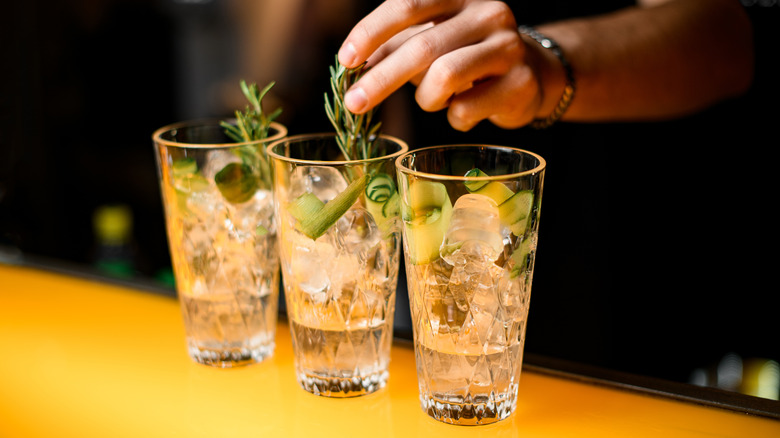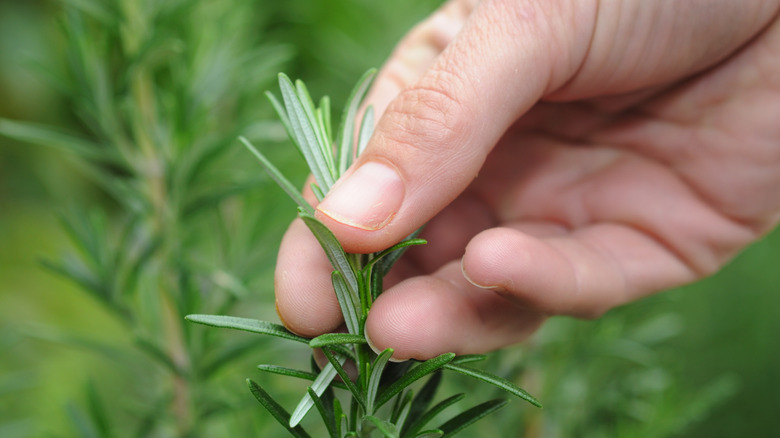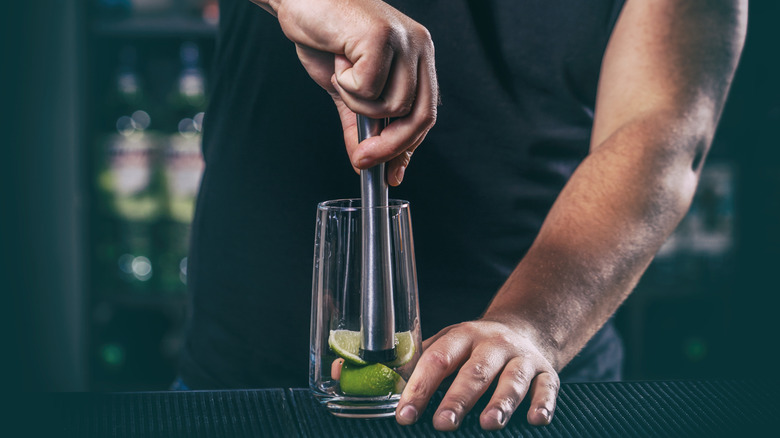Why Do Mixologists Slap Herbs?
While most recipes do require a little elbow grease to get the job done, some culinary enthusiasts have taken the phrase a little too literally. Looking at you, mixologists. If you don't know what we're talking about, have you ever seen a bartender smack a garnish before adding it into a drink? Yeah, that. Before you shoot them an odd look, there's actually solid scientific evidence behind this simple practice, and it actually does make for better tasting cocktails.
Hidden in the leaves of mint and basil are oils containing elusive fresh scents and flavors. To extract these enhancing notes, a bartender might lightly slap, smack, or rub the leaves of a garnish between their hands before adding it to a drink. Beyond an act of showmanship, like tossing a cocktail shaker in the air, this simple technique extracts the flavors and smells hidden in the outer structure of the leaves, which can easily augment the all-around experience of the beverage.
The herbs that will benefit from a light smack
While there are a ton of different garnishes to choose from, the ones that fit in the "might want to smack" category include most herbs. From rosemary, mint, basil, and thyme, the list is a long one. To try this technique on these garnishes out for yourself, simply grab your herb of choice and place it in your hand, then gently slap it with your other palm. You should be able to smell the difference in the air almost immediately. Whether you're trying to elevate a thyme garnish for a gin and tonic, or bring even more delightful aromatics into an old fashioned, this could be a helpful tool to do just that.
Slapping or rubbing a garnish before adding it to a drink is helpful, but there are some similar practices mixologists employ that seem to give the same effect. Smacking requires no tools, sure, but it's not just convenience that makes this a better choice for some cocktail garnishes. There's somewhat of a sister practice to smacking in mixology known as muddling. Akin to using a mortar and pestle, this technique is a common one in mixology, which is why it's often a part of the best cocktail sets.
When it might be time to muddle a garnish instead
Muddling requires bartenders to use a stick to crush or smash herbs in a glass to extract their flavors. So, since smacking and muddling have the same effects, how do you know it's time to muddle vs. slap? Well, that all depends on the garnish. Some leaves and stems are more fragile than others, and over-extracting the flavor can do much more harm than good. That's because herbs are made up of lovely, fragrant oils as well as earthy, bitter compounds such as chlorophyll. Over-extracting these oils is possible, and can leave a drink tasting too earthy or bitter. You want to agitate some herbs just enough that it releases its oils without also releasing the chlorophyll hidden deeper inside. Hidden notes of bitterness can be expressed if an herb that's supposed to be slapped is muddled instead, which could leave imbibers with a bad taste in their drink.
So, to prevent this phenomenon, only muddle tough garnishes such as fruits like strawberries or citrus. Muddling releases the inner acidic sweetness of these garnishes, while the more fragile herbs with leaves and stems should be saved for slapping instead. (Which is why whether to muddle or not muddle your mint for a Mojito is such a big debate.) Luckily, slapping or rubbing is always an option, so both techniques are good to keep in mind when preparing a batch of cocktails.


